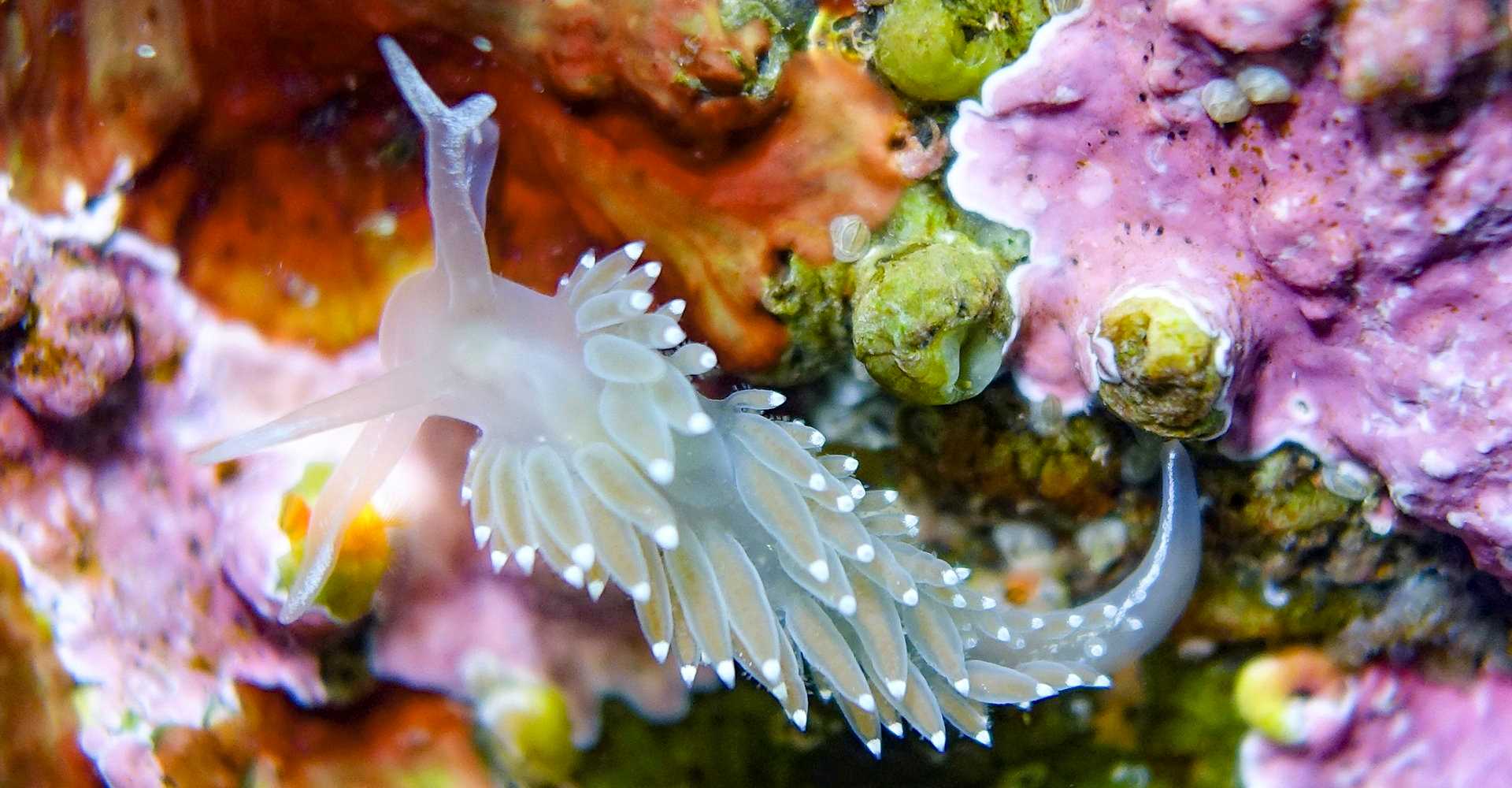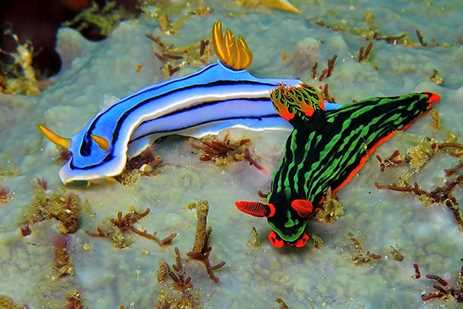On the Prowl
These tiny carnivores use actual teeth or even digestive enzymes to eat coral, sponges, anemones, and other prey. But some species—like the Indo-Pacific’s killer sea slug Gymnodoris rubropapulosa—even cannibalize their own kind.

Phyllum: Mollusca Get Inspired By Photos, Videos, Webinars, Stories, And Exclusive Offers. Sign Up
Class: Gastropoda
Order: Nudibranchia
Range: All the world’s oceans—from the tropics to Antarctica—at all depths, but most abundant in warm, shallow waters and the intertidal zone
Population: Total pop. unknown. Scientists frequently discover new species
How to spot them: Generally oblong in shape—can be thick or flattened, long or short; often brightly colored but can be colorless; feathery gills and horns; span from 0.25 to 12 inches long
IUCN Red List Status: A few species, such as the blue glaucus, are endangered
The ocean is teeming with all kinds of fascinating creatures, but one of the strangest—and most beautiful—may very well be one you’ve never heard of. Nudibranch (NEW-dih-bronk)—from the Latin for ‘naked gills’—is the umbrella name for more than 3,000 species (and counting) of shell-less mollusks, part of the sea slug family. Splashed with technicolor hues and intricate patterns, these photogenic sea slugs are small but fierce—and often deadly, as science has discovered. Serious research on the ocean’s tiny jewels kicked off fairly recently, during the 1960s. Today, there are only about 40 to 50 nudibranch experts around the globe delving into the slugs’ unique adaptations and pushing research forward.
One of the most incredible discoveries they’ve made to date is the creative way nudibranchs protect their naked, fleshy bodies, once they shed their larval stage shells. Aside from those flashy colors, which serve as a warning to predators looking for a quick snack, nudibranchs are able to render themselves toxic by stealing the defensive poisons from their prey—and then stockpiling it in beautiful feathery gills, called cerata. The sea lemon, for instance, uses toxins from the sea sponges it eats to give itself a sour taste. Other nudibranchs are much deadlier—one species chows down on the hyper-toxic tentacles of a Portuguese man-of-war, then serves up a lethal burst of those chemicals when a predator goes in for the kill.
Learn more facts about these spectacular sea slugs.
